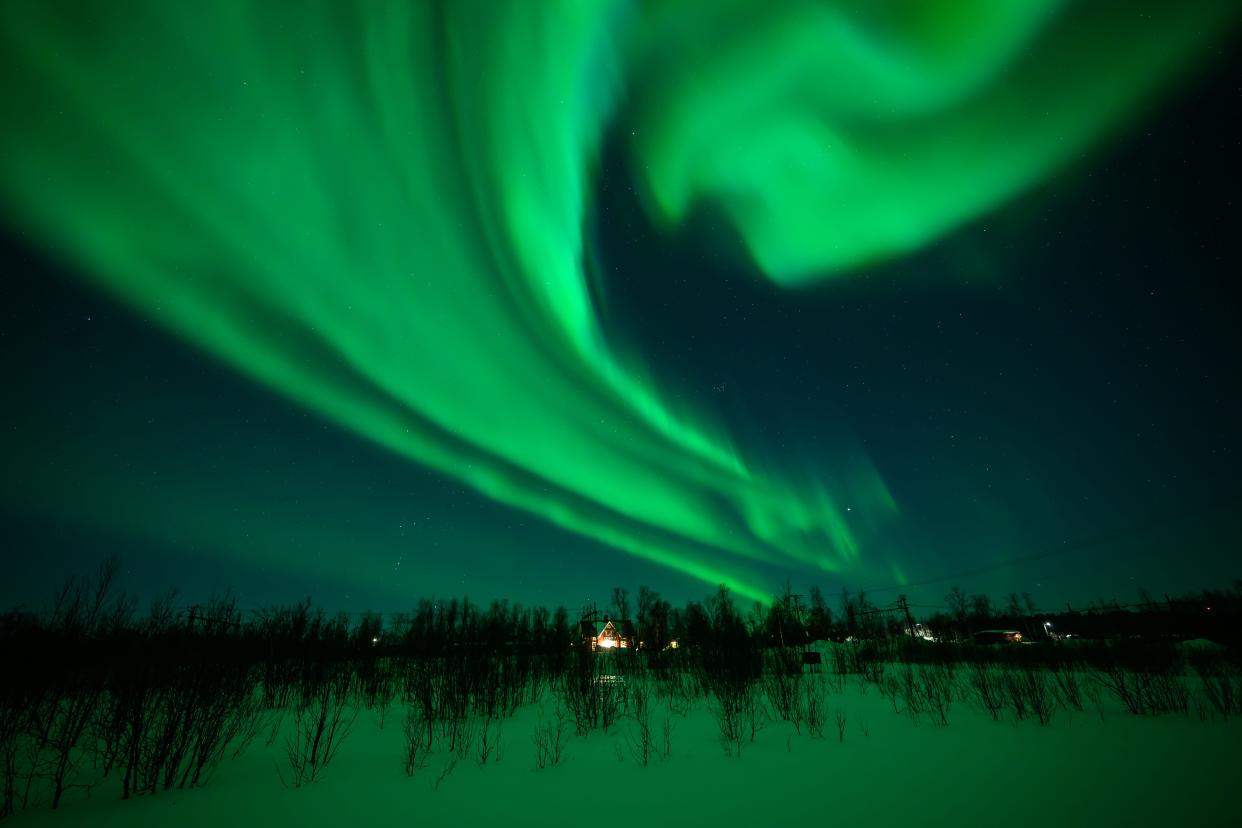Ohio could see northern lights this weekend. But what are they? Phenomenon explained
Ohioans may be able to see the aurora borealis, also called the northern lights, this weekend.
Federal forecasters from NOAA's Space Weather Prediction Center said during previous solar activity of this magnitude, the "aurora has been seen as low as Alabama and northern California." Experts say the aurora might be visible Friday, Saturday or Sunday nights.
The spectacle would be courtesy of a series of coronal mass ejections (CMEs) from the sun, which are forecast to reach the Earth early this weekend and produce the geomagnetic storms that trigger auroras. A G4 (severe) geomagnetic storm watch is in effect for Saturday, May 11, NOAA said.
But what exactly is aurora borealis? And what about coronal mass ejections? Here's what to know:
What are the northern lights? Aurora borealis explained
According to Space.com, an aurora is created when the sun ejects charged particles from its upper atmosphere, creating a solar wind that slams "into Earth's upper atmosphere at speeds of up to 45 million mph."
"As Earth's magnetic field redirects the particles toward the poles ... the dramatic process transforms into a cinematic atmospheric phenomenon that dazzles and fascinates scientists and skywatchers alike," Stefanie Waldek and Daisy Dobrijevic wrote for Space.com.
Why are the northern lights mostly visible in the north?
There are actually southern lights as well. While it's called aurora borealis in the Northern Hemisphere, the phenomenon is called aurora australis in the Southern Hemisphere.
According to University of Alaska Fairbanks, the lights are mostly visible at the North and South poles because of the behavior of earth's magnetic field.
"Those charged particles get sucked into the Earth's magnetic field and are then (channeled) toward the poles, where they are (channeled) toward a ring around each pole," per the university.
What are coronal mass ejections?
According to NOAA, coronal mass ejections (CMEs) "are large expulsions of plasma and magnetic field from the Sun’s corona," or upper atmosphere. They produce the geomagnetic storms that trigger auroras.
A G4 (severe) geomagnetic storm watch is in effect for Saturday, May 11, NOAA said.

How to view the aurora borealis
For the best viewing, the Space Weather Prediction Center recommends it be very dark. Get away from city lights and avoid trying to see them on the night of a full moon. The best time to view the aurora is within an hour or two of midnight, or 10 p.m. to 2 a.m.
Ohio weather forecast for the northern lights
According to the National Weather Service, Friday night looks good for aurora watching, if it appears. The forecast calls for mostly clear skies for the Akron, Columbus and Cincinnati areas.
Saturday night, however, is expected to be rainy in Akron. In Columbus, the night will start out wet, but then clear. And mostly clear skies are in the forecast for Cincinnati.
Sunday night returns to mostly clear skies across the state.
Chad Murphy and Doyle Rice contributed to this report.
This article originally appeared on Cincinnati Enquirer: Ohio may see northern lights. What are they? Aurora borealis explained
